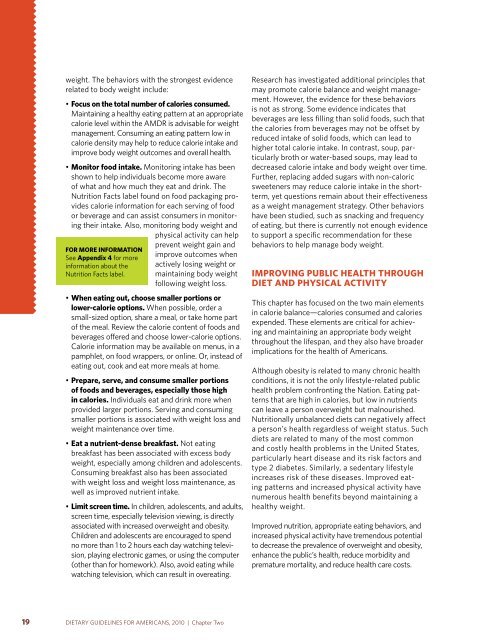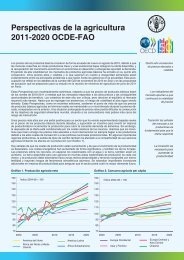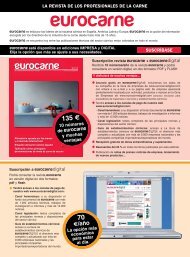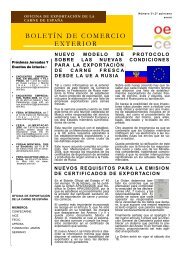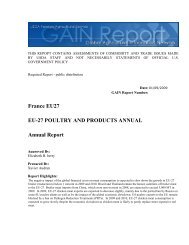Dietary Guidelines for Americans - SchoolNutritionAndFitness.com
Dietary Guidelines for Americans - SchoolNutritionAndFitness.com
Dietary Guidelines for Americans - SchoolNutritionAndFitness.com
- No tags were found...
Create successful ePaper yourself
Turn your PDF publications into a flip-book with our unique Google optimized e-Paper software.
weight. The behaviors with the strongest evidencerelated to body weight include:• focus on the total number of calories consumed.Maintaining a healthy eating pattern at an appropriatecalorie level within the AMDR is advisable <strong>for</strong> weightmanagement. Consuming an eating pattern low incalorie density may help to reduce calorie intake andimprove body weight out<strong>com</strong>es and overall health.• Monitor food intake. Monitoring intake has beenshown to help individuals be<strong>com</strong>e more awareof what and how much they eat and drink. TheNutrition Facts label found on food packaging providescalorie in<strong>for</strong>mation <strong>for</strong> each serving of foodor beverage and can assist consumers in monitoringtheir intake. Also, monitoring body weight andphysical activity can help<strong>for</strong> More in<strong>for</strong>MationSee appendix 4 <strong>for</strong> morein<strong>for</strong>mation about theNutrition Facts label.prevent weight gain andimprove out<strong>com</strong>es whenactively losing weight ormaintaining body weightfollowing weight loss.• when eating out, choose smaller portions orlower-calorie options. When possible, order asmall-sized option, share a meal, or take home partof the meal. Review the calorie content of foods andbeverages offered and choose lower-calorie options.Calorie in<strong>for</strong>mation may be available on menus, in apamphlet, on food wrappers, or online. Or, instead ofeating out, cook and eat more meals at home.• Prepare, serve, and consume smaller portionsof foods and beverages, especially those highin calories. Individuals eat and drink more whenprovided larger portions. Serving and consumingsmaller portions is associated with weight loss andweight maintenance over time.• eat a nutrient-dense breakfast. Not eatingbreakfast has been associated with excess bodyweight, especially among children and adolescents.Consuming breakfast also has been associatedwith weight loss and weight loss maintenance, aswell as improved nutrient intake.• limit screen time. In children, adolescents, and adults,screen time, especially television viewing, is directlyassociated with increased overweight and obesity.Children and adolescents are encouraged to spendno more than 1 to 2 hours each day watching television,playing electronic games, or using the <strong>com</strong>puter(other than <strong>for</strong> homework). Also, avoid eating whilewatching television, which can result in overeating.Research has investigated additional principles thatmay promote calorie balance and weight management.However, the evidence <strong>for</strong> these behaviorsis not as strong. Some evidence indicates thatbeverages are less filling than solid foods, such thatthe calories from beverages may not be offset byreduced intake of solid foods, which can lead tohigher total calorie intake. In contrast, soup, particularlybroth or water-based soups, may lead todecreased calorie intake and body weight over time.Further, replacing added sugars with non-caloricsweeteners may reduce calorie intake in the shortterm,yet questions remain about their effectivenessas a weight management strategy. Other behaviorshave been studied, such as snacking and frequencyof eating, but there is currently not enough evidenceto support a specific re<strong>com</strong>mendation <strong>for</strong> thesebehaviors to help manage body weight.iMProving PuBlic health throughdiet and Physical activityThis chapter has focused on the two main elementsin calorie balance—calories consumed and caloriesexpended. These elements are critical <strong>for</strong> achievingand maintaining an appropriate body weightthroughout the lifespan, and they also have broaderimplications <strong>for</strong> the health of <strong>Americans</strong>.Although obesity is related to many chronic healthconditions, it is not the only lifestyle-related publichealth problem confronting the Nation. Eating patternsthat are high in calories, but low in nutrientscan leave a person overweight but malnourished.Nutritionally unbalanced diets can negatively affecta person’s health regardless of weight status. Suchdiets are related to many of the most <strong>com</strong>monand costly health problems in the United States,particularly heart disease and its risk factors andtype 2 diabetes. Similarly, a sedentary lifestyleincreases risk of these diseases. Improved eatingpatterns and increased physical activity havenumerous health benefits beyond maintaining ahealthy weight.Improved nutrition, appropriate eating behaviors, andincreased physical activity have tremendous potentialto decrease the prevalence of overweight and obesity,enhance the public’s health, reduce morbidity andpremature mortality, and reduce health care costs.19DIETARY GUIDELINES FOR AMERICANS, 2010 | Chapter Two


